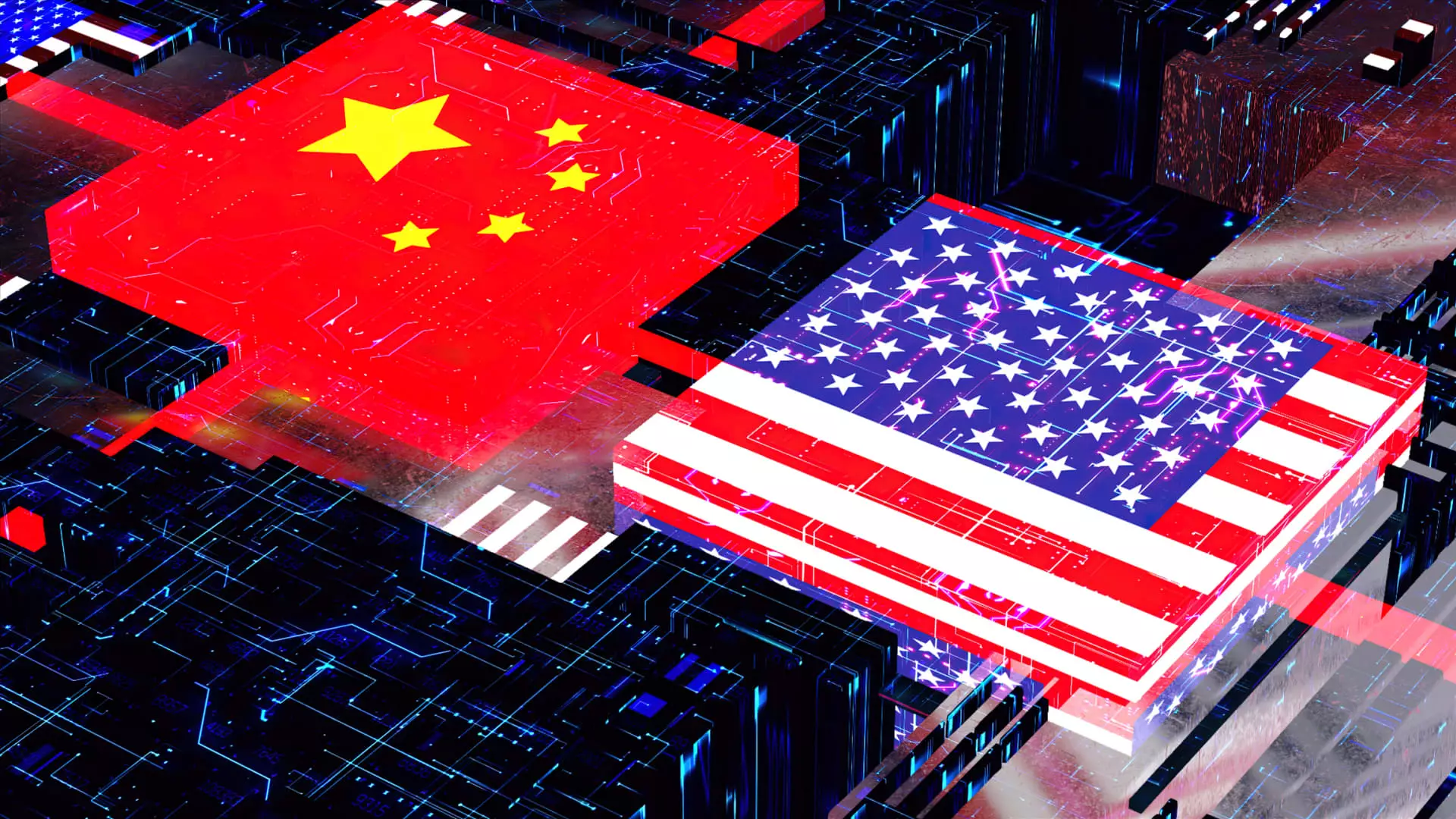The semiconductor industry, which serves as the backbone of modern technology, is currently enveloped in a fog of uncertainty. From supply chain disruptions to fluctuating demand patterns, recent trends signal an alarming trend for companies that manufacture semiconductors. The debate over U.S. tariff policies and export restrictions, particularly regarding China, has sent shockwaves through one of the world’s most critical sectors. As earnings season unfolds, a pervasive sense of foreboding looms over executives and investors alike. The stakes are high, and the implications for the global economy could be profound.
The world’s semiconductor giants, including AMD, Marvell, and Nvidia, are grappling with the implications of ever-evolving U.S. trade policies. These changes not only affect profit margins but raise fundamental questions about the viability of future growth in the U.S. tech sector. As we venture deeper into economic complexities, an ominous theme emerges: uncertainty brews a perfect storm that could devastate the semiconductor landscape.
Unpacking Tariff Policies: A Double-Edged Sword
U.S. President Donald Trump’s earlier imposition of “reciprocal” tariffs marked an aggressive shift in trade policy that many believed would boost American manufacturing. However, the reality has unfolded differently. The initial pause of these tariffs on certain tech products almost feels like a temporary release in a pressure cooker, but the potential for renewed pressure continues to linger ominously. Just recently, more semiconductor products from Nvidia and AMD were curtailed under new export restrictions targeting China, a move that carries consequences not just for these companies but for the broader global marketplace.
What is even more alarming is that for companies like AMD, the tangible impact of these policies manifests in stark financial forecasts. An anticipated loss of $1.5 billion due to AI chip export restrictions paints a grim picture of the disconnect between national policy and the operational reality faced by businesses. Moreover, Super Micro’s decision to forgo earnings guidance emphasizes the volatility affecting the industry. The fragility of market confidence rests on a knife’s edge, teetering between caution and reckless optimism.
Impact of Macroeconomic Conditions: The Invisible Hand
Economic conditions are another critical factor amplifying uncertainties in the semiconductor sector. While tech giants like Microsoft and Amazon ramp up investments in data centers, concerns about demand for AI products cast shadows over expected growth. The VanEck Semiconductor ETF, a representative mix of chip stocks, has plummeted by nearly 12% in 2023, sending a clear message of investor anxiety. This instability hints at a possible reckoning as the world holds its breath, wondering if this downturn is a fleeting phase or a sign of deeper systemic issues.
Samsung’s acknowledgment of “demand volatility” echoes this sentiment, highlighting that uncertainty is not confined to American chipmakers alone. Executives across the industry are recognizing that the interplay between trade policies and geopolitical tensions complicates the path ahead. The complexity of these factors is further exacerbated by rising tensions and intermittent trade skirmishes that leave business leaders scratching their heads while trying to predict market behaviors.
American Innovation vs. Global Competition: A Race Against Time
The U.S. chip industry has long positioned itself as a beacon of innovation, but emerging competitors from China beg to differ. With Chinese companies like DeepSeek and Alibaba innovating at an unparalleled pace, America’s edge is being challenged. Nvidia’s CEO Jensen Huang emphasizes the urgent need for the U.S. to engage fully with global competition. He asserts that our nation must not shy away from the race but instead “put the pedal to the metal.” Not only does this suggest a call to arms for American firms, but it also raises crucial questions about whether waiting and imposing restrictions will ultimately hinder our competitive edge.
As the semiconductor sector struggles against the dual threats of tariffs and rising competition from abroad, it is clear that stagnant approaches to trade will only exacerbate our issues. While discussions around technology export limitations seek to curtail China’s ambitions, they may inadvertently stifle innovation within our own borders.
Looking Ahead: The Road to Clarity?
Navigating this shifting terrain will require both adaptability and foresight from key stakeholders. Investors and industry leaders alike must grapple with the rapidly changing landscape of tariffs, geopolitical tensions, and competitive pressures. The complexities within the semiconductor sector are emblematic of broader trends impacting the global economy. Ominous tides of uncertainty are rising, and those in positions of power must demonstrate the agility to ride these waves rather than simply weather them.
In a world dominated by technology, the significance of these discussions cannot be overstated. What is at stake is not merely the profitability of a few companies but the very future of American innovation on the global stage. The crossroads we find ourselves at demands far deeper introspection and strategic action than mere reactive measures. The road ahead promises to be bumpy, but it also presents a unique opportunity for true leadership and innovation. The question remains: will we seize this moment or allow uncertainty to dictate our fate?

